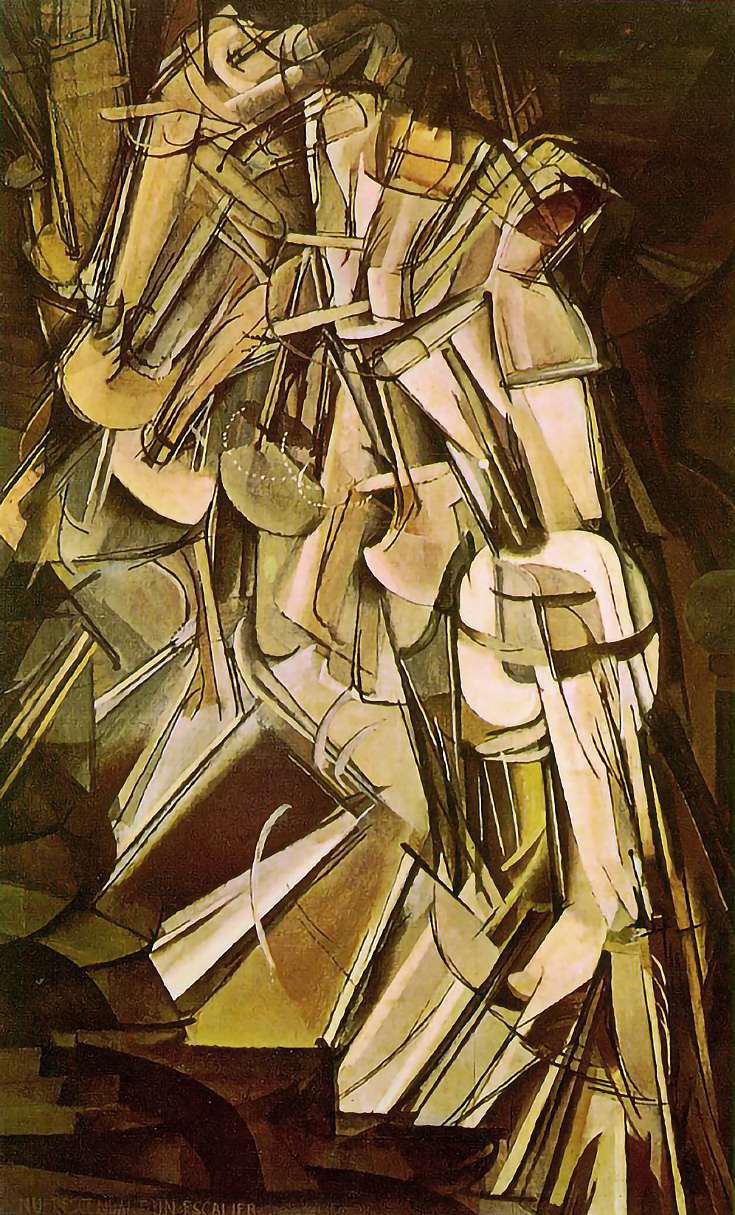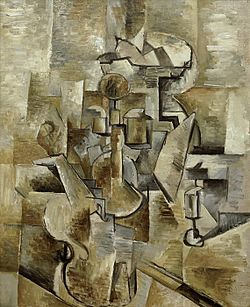 |
| Marcel Duchamp's Nude Descending a Staircase, No. 2 (1912) |
"Authentic cubism is the art of depicting new wholes with formal elements borrowed not from the reality of vision, but from that of conception. This tendency leads to a poetic kind of painting which stands outside the world of observation; for, even in a simple cubism, the geometrical surfaces of an object must be opened out in order to give a complete representation of it...Everyone must agree that a chair, from whichever side it is viewed, never ceases to have four legs, a seat, and a back, and that, if it is robbed of one of those elements, it is robbed of an important part."
Gardner, Helen, and Fred S. Kleiner. Gardner's Art through the Ages: The Western Perspective. Australia: Wadsworth/Cengage Learning, 2010. 697.
This style of painting does not really appeal to me aesthetically, but I think it is an interesting idea to break down objects and people to their most basic forms and shapes. I think this breakdown can help my students to think about how poems are "formed." I also think that looking at this style of painting when we read several Hemingway short stories and talk about the Lost Generation and the fragmentation in society following World War One.
 |
| Georges Braque's Violin and Candlestick (1910) |
 | ||||||
| Pablo Picasso's Portrait of Ambroise Vollard (1910) |
No comments:
Post a Comment